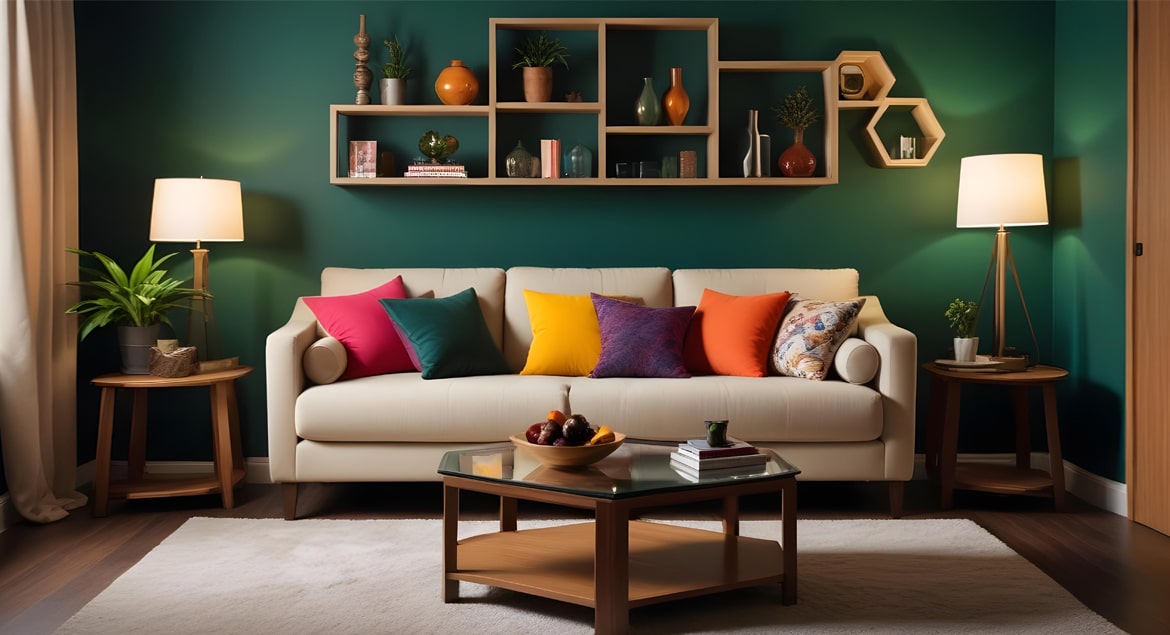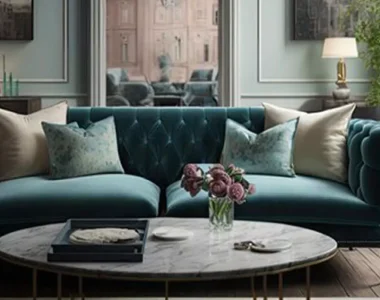Color plays a vital role in our daily lives, influencing our emotions, perceptions, and even behaviors. When it comes to home design, the colors of your furniture can significantly impact the mood of your living space. Understanding the psychology of color can help you make informed choices that create a harmonious and inviting environment. In this article, we will explore how different colors affect mood and provide tips for selecting furniture that enhances your home’s atmosphere.
1. The Impact of Color on Mood
Colors evoke emotions and can influence how we feel in a given space. Here are some common associations with various colors:
- Red: Often associated with energy, passion, and excitement. Red can stimulate appetite and conversation, making it suitable for dining areas or social spaces. However, too much red may lead to feelings of aggression or anxiety.
- Blue: Known for its calming and soothing effects, blue is associated with tranquility and peace. It’s an excellent choice for bedrooms and relaxation areas. Lighter shades can promote serenity, while darker blues can add sophistication.
- Yellow: This cheerful color represents happiness, optimism, and creativity. Yellow can brighten up a space, making it feel warm and inviting. However, excessive use of bright yellow may cause feelings of frustration or agitation.
- Green: Symbolizing nature and growth, green is refreshing and revitalizing. It promotes relaxation and harmony, making it a great choice for living rooms or home offices. Soft greens can create a sense of calm, while vibrant greens can energize a space.
- Neutral Colors: Shades like beige, gray, and white provide a sense of balance and calm. They serve as a backdrop for more vibrant colors, allowing you to incorporate accent pieces without overwhelming the space.
2. Selecting Furniture Based on Color Psychology
When choosing furniture for your home, consider the mood you want to create in each room. Here are some tips for selecting furniture colors that align with your desired atmosphere:
- Living Room: For a cozy and inviting living room, consider warm neutrals, earthy tones, or soft blues. These colors can create a welcoming environment for gatherings and relaxation. Accent pillows or throws in brighter colors can add pops of vibrancy without overwhelming the space.
- Bedroom: To promote restful sleep, opt for calming colors like soft blues, greens, or lavender for your bed frame and furnishings. These hues help create a serene environment conducive to relaxation and rejuvenation. Avoid overly stimulating colors that might interfere with sleep.
- Home Office: To enhance productivity and focus, consider using greens and blues. These colors can help reduce stress and promote concentration. Incorporate furniture in these colors to create a workspace that is both functional and inspiring.
- Dining Area: A vibrant red or yellow dining table can stimulate conversation and appetite. Choose chairs in coordinating colors or materials to create a cohesive look. Be mindful of balance; too much stimulation can lead to discomfort.
- Children’s Rooms: Bright colors like orange and yellow can inspire creativity and playfulness. Consider furniture in these shades, along with playful patterns, to create an engaging environment. However, include softer colors to help balance the energy.
3. Creating a Color Palette
When designing your home, consider creating a color palette that harmonizes different shades throughout your space. Here’s how to develop a cohesive look:
- Start with a Base Color: Choose a neutral base color for larger pieces of furniture (like sofas or beds) that will anchor your room.
- Add Accent Colors: Incorporate accent colors through smaller furniture items (like side tables or chairs) and decorion (such as rugs, curtains, and artwork). These accents can reflect your personality and interests.
- Balance Warm and Cool Colors: A mix of warm and cool colors can create visual interest while maintaining balance. For instance, pairing a warm beige sofa with cool blue accent chairs can create a harmonious look.
- Test Before You Commit: Before finalizing your choices, consider testing paint samples or fabric swatches in your space. Observe how the colors interact with your lighting throughout the day.
4. The Role of Texture and Material
In addition to color, the texture and material of your furniture also influence the overall mood of a space. Soft fabrics like velvet or plush upholstery can add warmth and comfort, while sleek materials like glass or metal may create a more modern and sophisticated look. When selecting furniture, consider how both color and texture work together to enhance your desired atmosphere.
5. Personal Preference and Cultural Influences
While color psychology provides a general framework for understanding how colors affect mood, personal preference and cultural background also play significant roles in your choices. Some colors may evoke positive feelings for one person but not for another. Always consider your own tastes and experiences when selecting furniture colors.
6. Conclusion: Designing a Mood-Boosting Home
Creating a mood-boosting home involves more than just choosing beautiful furniture; it’s about understanding how color influences emotions and designing a space that reflects your personality and lifestyle. By thoughtfully selecting colors for your furniture and decoration, you can cultivate an environment that promotes comfort, creativity, and relaxation.




